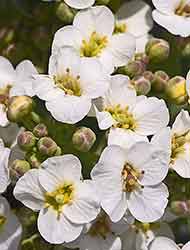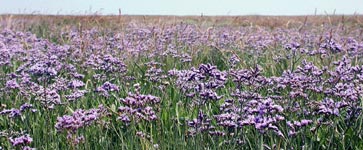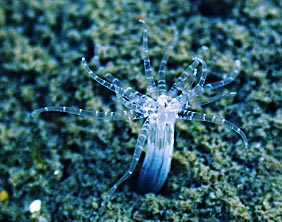| The Norfolk coast is unique. It has some of the finest stretches of unspoilt coastline in Britain, with broad sandy beaches and extensive tracts of saltmarsh. It has come to be known as the ‘saltmarsh coast’, while those of an artistic bent talk of the very special light and the Norfolk ‘skies’. |
The north coast is famous for its birding, and reserves such as Cley and Titchwell need no introduction. The near-resident Avocets are joined by masses of other waders which form spectacular roosts on the coast of the Wash from late summer onwards, Little Egrets are now commonplace and in the autumn and winter there are tens of thousands of geese and ducks. There is much more to see, however, and the area is a botanical treasure-house. In the summer months the Norfolk coast is a superb place for flowers, with many specialities to look for.
|
 |
 |
The saltmarshes hold four species of sea-lavenders (including Matted Sea-lavender, a species now confined to Norfolk within the British Isles). Common Sea-lavender |
| There are also several species of glassworts Salicornia (known locally as ‘samphire’ and collected for the kitchen). The dunes and shingle spits hold Sea-holly, Sea-heath, the bright Sea-pea and Yellow-horned Poppy, as well as Bee and Pyramidal Orchids, and in a few places the dune slacks are home to countless Marsh Helleborines and Southern Marsh Orchids. |
 |
Natterjack Toad is another speciality of the dunes, and its evening chorus of rasping croaks is said to be audible up to 2km way. Dark Green Fritillarys are now confined to the coast in Norfolk, and take a closer look at the sludgy pools behind the beach, where there are species characteristic of saline lagoons, such as Spiral Tasselweed and Starlet Sea-anemone (left). |
Yet, as with almost everything else in Norfolk, there is more to the coast than sandy beaches and saltmarsh. Both in the west, at Hunstanton, and in the east, from Weybourne round to Happisburgh on the east coast, there are low cliffs. The cliff-top grassland holds many interesting plants, including interesting clovers such as Rough, Clustered and Knotted Clovers and the delightfully-named Subterranean Clover. Other notable species include the sinister Purple Broomrape and dainty Sand Catchfly, whilst in some places the cliffs are flushed by springs and seepages and hold a profusion of orchids, notably the lovely little Early Marsh Orchid of the red-flowered subspecies, which looks like a fat little hyacinth and is endemic to Britain and Ireland. Purple Broomrape |
 |


